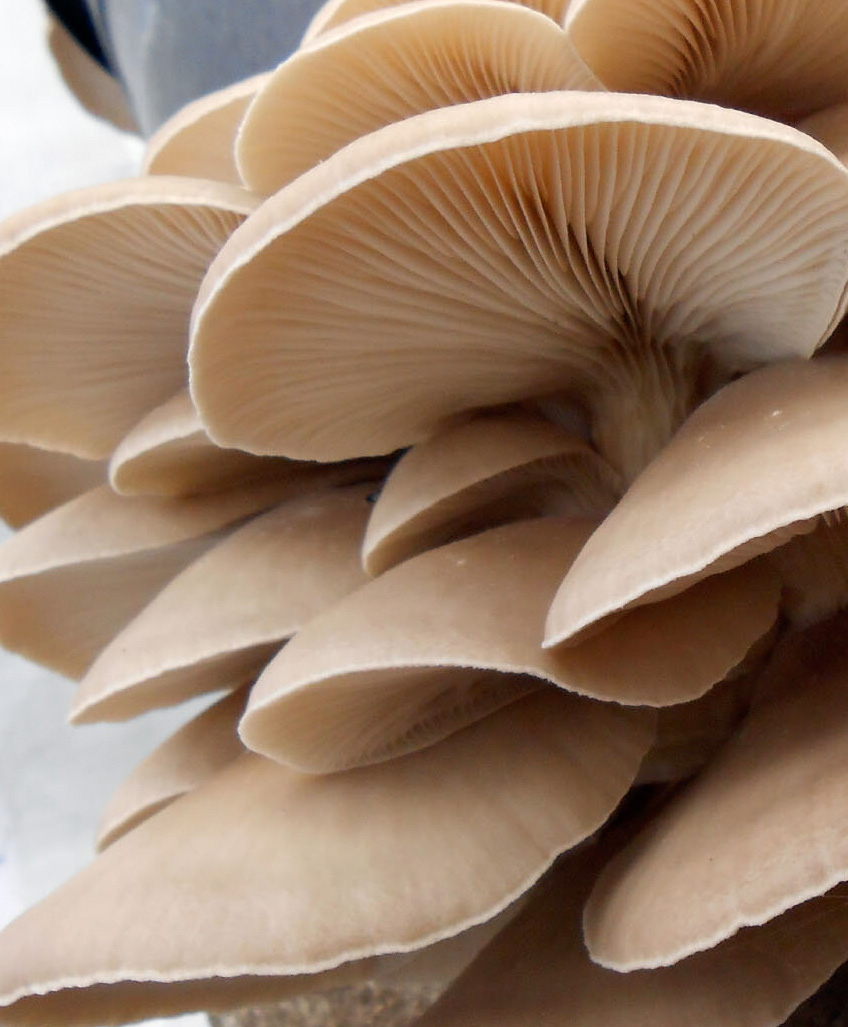Elm Oyster (Hypsizygus ulmarius)
Although everything about it suggests otherwise, the “Elm oyster” or “white oyster” does not belong to the Pleurotus family but is a cousin of the better-known “Shimeji,” long found in Asian markets. Both belong to the genus Hypsizygus.
History
The elm oyster – Hypsizygus ulmarius – or in Japanese, Shirotamogitake, is found in hardwood forests throughout the Northern Hemisphere. It grows not only on elm but also on beech and other hardwoods.
In our regions, it is rarely consumed for a simple reason: it grows high up, out of sight, which earned it its Latin name meaning “high up in the elm.”
It generally grows on wounds of trees—dead wood that has accumulated enough moisture to be colonized by the mushroom. This sometimes led to it being considered a parasite, but it is very unlikely to attack healthy tissue.
Morphologically very similar to oyster mushrooms, it has a stouter stem and typically grows as isolated fruiting bodies in nature. Clustered growth is the result of selections made for easier cultivation, highly appreciated in Asia.
Nutritional Composition
Rich in essential amino acids, especially phenylalanine and lysine
- Vitamins : B3 (niacine), B4 (choline), B5, B9 (folate), E, D2
(after one hour of sun exposure)
Minerals and trace elements: calcium, iron, phosphorus, potassium, sodium, sulfur, zinc
Protein: 20–25% (dry weight)
Polysaccharides: beta-(1,3-1,6)-glucans
Fibers
Taste Experience
Morphologically very similar to oyster mushrooms, it has a stouter stem, which may need to be sliced thinly when cooking. The taste is also similar, with a pleasant aniseed note. It blends easily with oyster mushrooms, and the range of preparations is identical.
I invite you to visit the grey oyster page for recipe ideas.
Functional and Medicinal Aspects
We are currently reading and sorting the most useful scientific articles for you about the elm oyster. If you want to start your own research now, here is a direct link to the site listing all known scientific articles to date, PubMed:
hypsizygus ulmarius – Search Results – PubMed (nih.gov)

